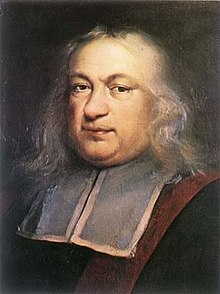Our website is made possible by displaying online advertisements to our visitors.
Please consider supporting us by disabling your ad blocker.
Pierre de Fermat
Pierre de Fermat | |
|---|---|
 Pierre de Fermat, 17th century painting by unknown author | |
| Born | 17 August 1601 |
| Died | 12 January 1665 (aged 63) |
| Education | University of Orléans (BCL, 1626) |
| Known for | Contributions to number theory, analytic geometry, probability theory Folium of Descartes Fermat's principle Fermat's little theorem Fermat's Last Theorem Adequality Fermat's "difference quotient" method[1] (See full list) |
| Scientific career | |
| Fields | Mathematics and law |
Pierre de Fermat (French: [pjɛʁ də fɛʁma]; [a]17 August 1601 – 12 January 1665) was a French mathematician who is given credit for early developments that led to infinitesimal calculus, including his technique of adequality. In particular, he is recognized for his discovery of an original method of finding the greatest and the smallest ordinates of curved lines, which is analogous to that of differential calculus, then unknown, and his research into number theory. He made notable contributions to analytic geometry, probability, and optics. He is best known for his Fermat's principle for light propagation and his Fermat's Last Theorem in number theory, which he described in a note at the margin of a copy of Diophantus' Arithmetica. He was also a lawyer[3] at the parlement of Toulouse, France.
- ^ Benson, Donald C. (2003). A Smoother Pebble: Mathematical Explorations, Oxford University Press, p. 176.
- ^ Cite error: The named reference
birthyearwas invoked but never defined (see the help page). - ^ W.E. Burns, The Scientific Revolution: An Encyclopedia, ABC-CLIO, 2001, p. 101
Cite error: There are <ref group=lower-alpha> tags or {{efn}} templates on this page, but the references will not show without a {{reflist|group=lower-alpha}} template or {{notelist}} template (see the help page).
Previous Page Next Page


